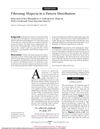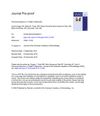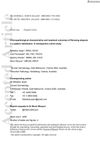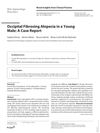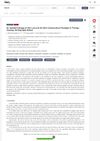Fibrosing Alopecia in a Pattern Distribution
February 2010
in “
Journal of the European Academy of Dermatology and Venereology
”
fibrosing alopecia in a pattern distribution cicatricial alopecia male pattern hair loss female pattern hair loss inflammation fibrosis decreased follicular density absence of follicular orifices erythematous scaly lesions violaceous hue miniaturized hair follicles perifollicular lamellar fibrosis lymphocytic infiltration androgenetic alopecia lichen planopilaris antiandrogen therapy scalp inflammation frontal fibrosing alopecia follicular degeneration syndrome pseudopelade of Brocq FAPD scarring alopecia male pattern baldness female pattern baldness red scaly lesions purple hue miniaturized follicles lamellar fibrosis lymphocyte infiltration AGA LPP antiandrogen treatment scalp redness FFA follicular degeneration pseudopelade
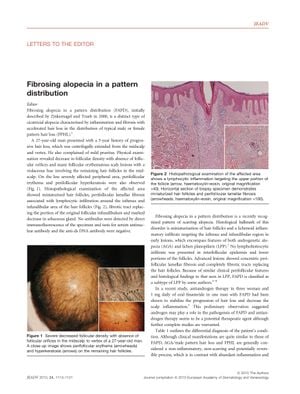
TLDR Fibrosing alopecia in a pattern distribution is a unique hair loss condition that may respond to antiandrogen therapy.
In the document, Fibrosing alopecia in a pattern distribution (FAPD) is described as a distinct type of cicatricial alopecia that presents with symptoms similar to male or female pattern hair loss but includes inflammation and fibrosis. A case of a 27-year-old man with a 5-year history of progressive hair loss and mild pruritus is discussed. His physical examination showed decreased follicular density, absence of follicular orifices, and erythematous scaly lesions with a violaceous hue. Histopathological examination revealed miniaturized hair follicles, perifollicular lamellar fibrosis, and lymphocytic infiltration, without detection of antibodies. The condition shares features with both androgenetic alopecia (AGA) and lichen planopilaris (LPP), and preliminary observations suggest that antiandrogen therapy may stabilize hair loss progression and decrease scalp inflammation in FAPD, indicating a potential role for androgens in its pathogenesis. However, further studies are needed to confirm these findings. The document also compares FAPD with other conditions such as frontal fibrosing alopecia, follicular degeneration syndrome, and pseudopelade of Brocq, highlighting the unique characteristics of FAPD.

